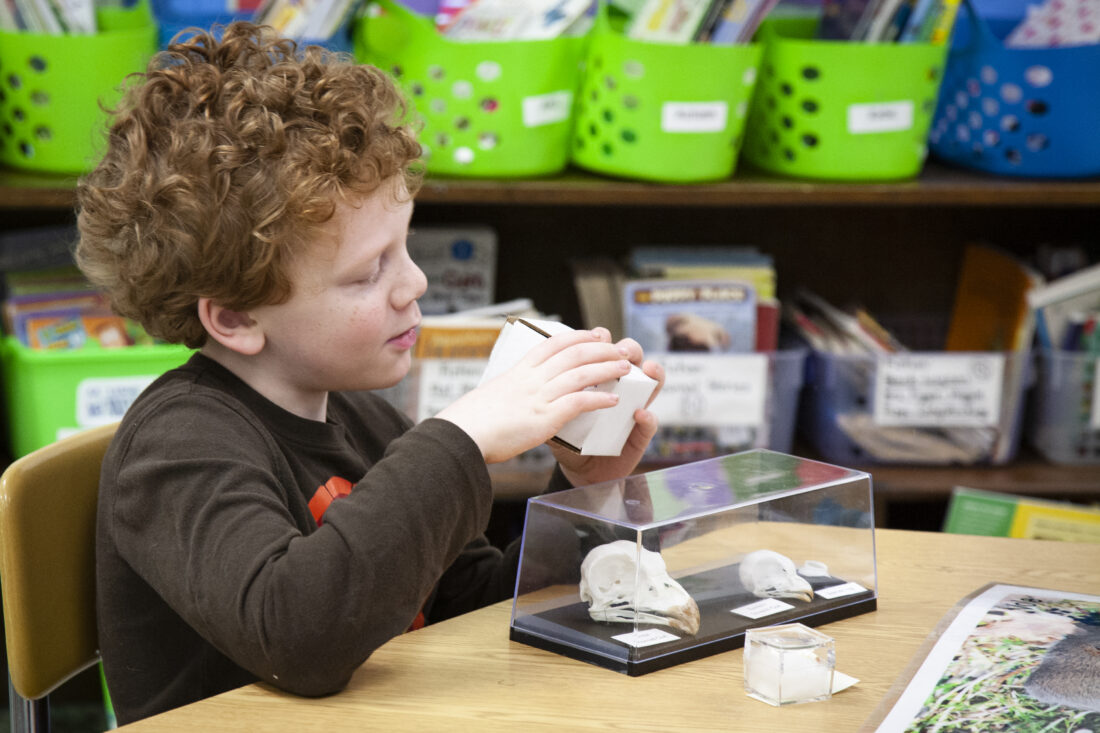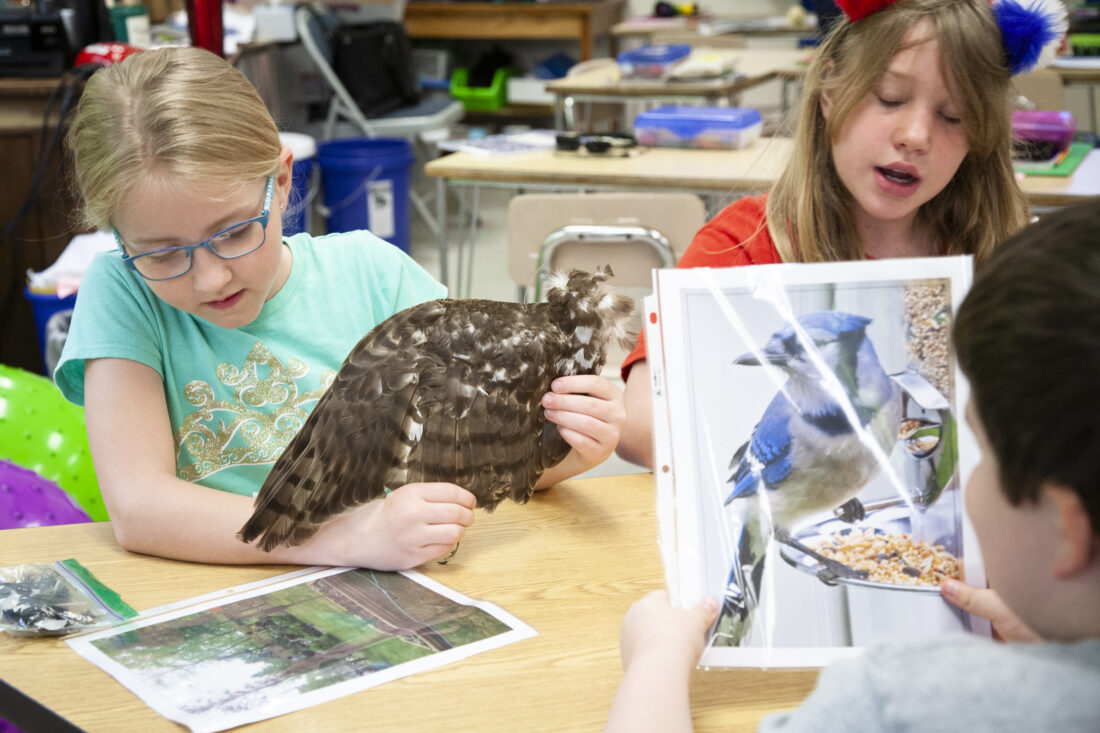What we can learn from death

Skulls and bones allow students to learn about the parts of animals we can’t always see when they are alive.
- Skulls and bones allow students to learn about the parts of animals we can’t always see when they are alive.
- Animal artifacts can help students compare adaptations and learn how the animals survive.
- Items from real animals help students not only learn about the animals but form a deeper connection to them.
One of the things Audubon takes pride in is bringing real nature items into classrooms. This includes leaves, sticks, feathers, and the more macabre: beaver tails, animal pelts, and skulls. These objects fascinate the students, but they always want to know where we got them, and more importantly, did the animal die?
Having frank discussions about death has become a normal part of my job. Yes, most of the items I bring in came from animals that died. And while the students may be surprised or saddened to hear this, it’s a great teaching moment. After reassuring the students that I did not go out and kill an animal just to bring it to their classroom, we theorize how the animal passed away.
Maybe it fell victim to a predator, or it got sick or injured. Was it a natural injury or could it have been caused by humans? With so many animal bits and parts around ACNC, it’s hard to say where every single one came from, and how each of them died, but discussing the possibilities helps the students process what’s in front of them. Yes, an animal died, yes you are allowed to feel sad about it, but can we learn something from this animal that will make its death less sad?
The initial reaction of sadness, or even disgust, at a dismembered animal part is not limited to children either. I’ve seen it many times with adults at outreach events. My own family is sometimes taken aback by the stories I tell them. Just recently, when asked what I had done at work that day, my sister was mildly traumatized when I told her I had learned how to dissect duck wings to prepare them for preservation. The accompanying photo I sent probably didn’t help things, but it took some reasoning to get her to see the practical side of it. In classroom programs, we can’t bring the students into nature, so we bring nature to the students.

Animal artifacts can help students compare adaptations and learn how the animals survive.
Like most of my coworkers, I’ve become desensitized to the reminders of death around me. From the taxidermy zoo that we call an office, to the box of beaver tails sitting behind my chair, our work is surrounded by things that were once alive.
And maybe I’ve become too desensitized. I find myself knowing that these things used to be living, breathing animals, but I don’t often think of the lives they lived. They hunted or foraged for food, felt cold and hot, and were tired after a long day, or night, of wild adventures. They swam,
ran, flew, and had families. And now they are sitting on a desk, or in a bag or closet, waiting to be pulled out for a program.
There’s no denying that all this is somewhat morbid, and death is a topic that must be handled carefully in the classroom, but there is no use in trying to shield the students from it. Everything dies, and death is part of nature, just as much as life is.
There are ways we can honor the things that have passed before us, and I like to think using them as teaching tools is a beautiful way of doing that. It allows the students to form a connection with these creatures. They know what the animal feels like, how it would find its food and navigate the world. As a Nature Educator it’s my hope these connections spark a true curiosity and interest in nature in the students we see, and maybe they’ll go out and help the living animals around us.

Items from real animals help students not only learn about the animals but form a deeper connection to them.
Audubon Community Nature Center builds and nurtures connections between people and nature. ACNC is located just east of Route 62 between Warren and Jamestown. The trails and outdoor facilities are open from dawn to dusk. The Nature Center is open from 10 a.m. until 4:30 p.m. daily except Sunday when it opens at 1 p.m. More information can be found online at auduboncnc.org or by calling (716) 569-2345.









